Fab Four Specials from May 16-18, 2019 Auction, Featuring Tennessee Estates
Asheville, NC - Join Brunk Auctions for our early summer sale May 16-18, 2019 Premier & Emporium Auction, with over 1700 lots with some distinctly unusual offerings, featured below. This spring contains an immense R. Lalique art glass collection, a large lifelong collection of horse-sporting-hunting fine art, bronzes, and porcelain, and a dazzling display of diamond jewelry.
1) Large Silver Ingot from Atocha Shipwreck
Lot 1289, Large Silver Ingot from Atocha Shipwreck; Estimate $28,000-$36,000
Nuestra Señora de Atocha left South America bound for Spain with 265 people aboard, along with tons of silver, gold and other precious metals and gemstones. On September 6, 1622 the Atocha sank in a hurricane near the Florida Keys leaving only five survivors. During the rescue, the wreck was marked with hopes of later salvaging the priceless cargo. However, another hurricane came through and relocated the wreckage of the ship and all its bounty. The Spanish government spent nearly 60 years trying to locate the site before finally giving up and the ill-fated Atocha lay undiscovered for another 360 years until it was found by treasure hunter Mel Fisher in 1985. The cargo of the Atocha included one thousand silver ingots that had been mined in upper Peru (now Bolivia). The lot being sold is one of the ingots that went down with the Spanish galleon Atocha nearly 400 years ago.
1621, ingot was recovered from the wreck of the Nuestra Señora de Atocha, top impressed with several marks including silvermaster’s mark, Jacove de Vreder, manifest number 691, assayer’s bite mark and fineness mark for 2380/2400, tax seal marks, monogram for owner/shipper J. Delgado, underside with Treasure Salvors, Inc. inventory mark “A445/85”, 85 troy pounds, 7.20 troy ounces (approximately 70.5 pounds), 3-1/2 x 14 x 5 in.; lot accompanied by certificate of authenticity
Provenance: Property from an Important Tennessee Living Estate
2) 1973 Jaguar XKE V-12 Convertible
Lot 1073, 1973 Jaguar XKE V-12 Convertible; Estimate $30,000-$50,000
The odometer reads 15,557, four speed manual transmission, cream exterior, black interior, later top, after market Pioneer radio, ID# UD1523232, appears to be original interior
Provenance: Estate of Danny Wiginton, Huntsville, Alabama
3) Sir Jacob Epstein (British, 1880-1959)
Lot 1210, Sir Jacob Epstein, Monument to William Blake (S. 498), 1956; Estimate $10,000-$15,000
In 1956, the Blake Society for Poets’ Corner in Westminster Abbey commissioned Jacob Epstein to create a portrait of the English poet and artist, William Blake (1757-1827). He worked from as many portraits and sketches as he could find. He was also able to procure photographs of the life masks in England’s National Portrait Gallery to create the portrait. When the bronze bicentenary bust was unveiled in Westminster Abbey 24 November 1957, not many of the Blake society attended. It is thought they may not have approved of the rather menacing image, but such was the power of the sculptor to forge strongly emotional sculptures.
In Evelyn Silber’s book, The Sculpture of Epstein, the publisher notes, “Jacob Epstein (1880-1959), though born in New York, was the most important British sculptor of the early twentieth century. Henry Moore is one among many who have acknowledged the positive role he played in their careers. Yet few artists have roused such passionate controversy over their work or suffered so many vociferous attacks from public and critics alike: charges ranged from obscenity and barbarism to belated romanticism. As Moore neatly put it, ‘He took the brickbats . . . and as far as sculpture in this century is concerned, he took them first.’ Epstein was a modern pioneer of direct carving and one of the first to collect and appreciate the function and form of primitive sculpture. However, as the author demonstrates in her introduction to Epstein’s artistic career, critical hostility and the lack of public commissions made carving and collecting increasingly private obsessions, while his income and fame rested on portraiture. At a period when his traditional, humanistic approach was being superseded by new philosophies and new material, Epstein came to be regarded as one of the few sculptors capable of creating a portrait which was far more than a mere likeness.”
Monument to William Blake (S. 498), 1956, edition of 3 including the plaster, signed on back of proper right shoulder “Epstein”, patinated bronze, 21-1/2 in.
Provenance: Ex-collection Mr. Edward P. Schinman; Private North Carolina Collection; From the Collection of Salem Academy and College, Winston-Salem, North Carolina
4) Imperial Kesi Slit Tapestry Dragon Robe
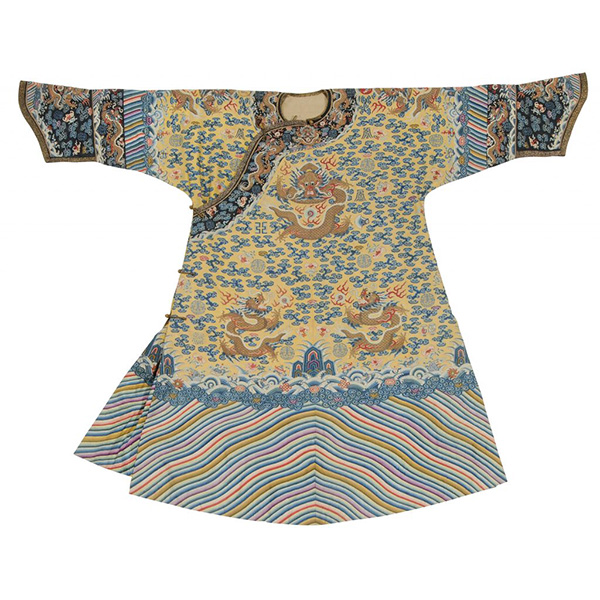
Although uniform in perhaps function, robes like this Imperial Kesi Tapestry Dragon Robe revealed rank of the man or woman who wore it, discerned by color, symbols, and animals contained, and were highly individualized. Dress for first-level consort or imperial government (not ritual or ceremonial functions), imperial robes of this kind are not only rare to find (because of their importance and formal use) but also unusual when tapestry woven with metal wrapping (kesi), not to mention each is one of a kind. The generous stylistic dedication to five-clawed dragons (long) playing with pearls suggests this was assigned to a male family member. With a hare stirring the elixir of life on one shoulder (moon), and a two-legged cockerel on the other (sun) these are two (amongst twelve) common prominent symbols of authority. Worn for circumstances celebrating the power and authority of Qing government, the symbols seen here align with the occasion: frontal and side-facing dragons surrounded by flying bats carrying wan emblems amongst shòu characters for longevity. To the hem of the robe, lishui, or standing water, dense stripes with fish amidst wave forms beneath their flying counterparts “establish orderly and astronomical balance” amongst elements. Most likely dated to late 19th century due to the purple hue found in the lishui border, imagery of mountains, constellations, and sacrificial cups can also be discovered amongst the clouds. Dragon robes are demonstrative of complex social structures and personal values made visible in a multi-faceted and highly technological fashion over centuries.
late Qing dynasty, imperial yellow silk tapestry woven in gold thread with 12 dragons, clouds, bats and other symbols over lishuiborder, brocaded silk lining, 52 in. length; lot accompanied with copy of 1980 receipt from Vallin Galleries, Wilton, Connecticut, reads “Twelve Symbol Imperial Consort’s Robe, late 19th century” and indicates a price of $2500
Provenance: Vallin Galleries, Wilton, Connecticut; Private Collection, North Carolina
Please view upcoming highlights across other categories:
Art Nouveau 14kt. Gold and Ceylon Sapphire Ring
Iconic and remarkable in beauty, Ceylon sapphires are treasured by many notables, including Princess Diana, whose engagement ring was set with one. Center cushion cut blue sapphire estimated weight 10.0cts., AGL report 1099813, Ceylon origin
Provenance: Private Collection, Asheville, NC
Fine American Chippendale Walnut Dressing Table
Lancaster/Chester County, Pennsylvania, circa 1770, highly figured walnut, dovetailed drawers, poplar and white cedar secondary, finely carved shell drawer, scalloped skirt and knees, 29-3/4 x 34-3/4 x 19-3/4 in.
Provenance: Miss Adaline Sinnickson; Pook & Pook, September 20, 2003, lot 255; Property from an Important South Carolina Estate
Lalique Serpent Amber Glass Vase
Introduced 1924, model number 896, molded “R.LALIQUE”, 9-3/4 in.
Provenance: Dr. Phillip George Estate, Memphis, Tennessee
Alice Ravenel Huger Smith (Charleston, South Carolina, 1876-1958)
Moonrise over the Marsh, signed lower right “Alice R H Smith”, watercolor on paper, 22 x 13 in.; framed, 30 x 20-1/2 in.
Provenance: From the family; By descent to Sarah Harleston Huger of Richmond Plantation; By descent to Nancy Brocklehurs; By descent to the present owner
Rare George Hendel Coin Silver Tea Service
Carlisle, Pennsylvania, c. 1800, urn forms with bead borders, bird head spout, wooden handles, “W” monograms on body and base of coffee pot, marks for George Hendel (working 1802-1840), 79.43 oz. T., 14 in. coffee pot with matching teapot and creamer and lidded urn
Provenance: Pook & Pook, Inc., Downingtown Pennsylvania, April 24, 2009, lot 163; Property from an Important South Carolina Estate
Hollowware by George Handel is extremely rare. There is only one other tea service known and it is located in the collection of the Cumberland County Historical Society.
By Brunk Auctions
Copyright © 1999 - 2025 Brunk Auctions. All Rights Reserved.
- TURNER AUCTIONS + APPRAISALS PRESENTS THE GLADYNE K. MITCHELL COLLECTION ESTATE ON JULY 19
- Celebrate American Heritage with Dana Auctions’ January 25 Antique and Vintage Quilt and Textile Auction
- Exciting Online Auction from Rafael Osona Auctions - Exceptional offerings across multiple categories
- DIAMONDS ARE FOREVER: FINE JEWELRY, DIAMONDS & MORE COME TO TURNER AUCTIONS + APPRAISALS
- TAKE TIME OUT TO VIEW SPORTS MEMORABILIA, COMING TO TURNER AUCTIONS + APPRAISALS ON AUGUST 17
- Rafael Osona Announces Two Day Auction, Aug 3 & 4, 2024 Americana, Fine Arts, Historic Nantucket, Décor ~ Saturday, August 3 The Marine Session ~ Sunday, August 4 Open for Bidding ~ 1000 Lots ~
- Kobe Photomatched Final Game Worn Warm-Up Takes the Stage in SCP’s Summer Premier Auction
- BOHEMIAN CLUB & BOHEMIAN GROVE POSTERS, BOOKS & EPHEMERA COME TO TURNER AUCTIONS + APPRAISALS ON AUGUST 10
- Rafael Osona's Early Summer Auction Gallery Preview July 3,4,5 Auction July 6 - 700 lots
- CARMEL ESTATE AUCTION FEATURES DIVERSE ARTWORKS, DECORATIVE ARTS & MORE AT TURNER AUCTIONS + APPRAISALS
-
Antique Toy Auction at Pook & Pook Inc, with Noel Barrett
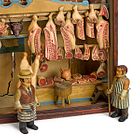
-
Sporting Immortality

-
The Collection of Mrs. John Gutfreund – Murray House, Villanova, Pennsylvania
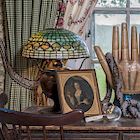
-
Leonora Carrington Oil Painting Sells for More Than Twice the Asking Price in the Latin American Art Auction Hosted by Morton Subastas in Mexico City
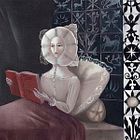
-
Peter Tillou Collection Highlights Litchfield Auctions’ 25th Anniversary




 EUR
EUR CAD
CAD AUD
AUD GBP
GBP MXN
MXN HKD
HKD CNY
CNY MYR
MYR SEK
SEK SGD
SGD CHF
CHF THB
THB


.jpg)


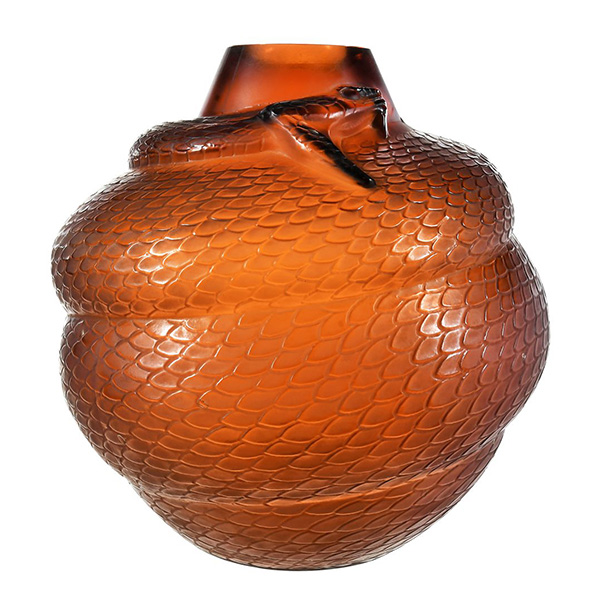
.jpg)
.jpg)
